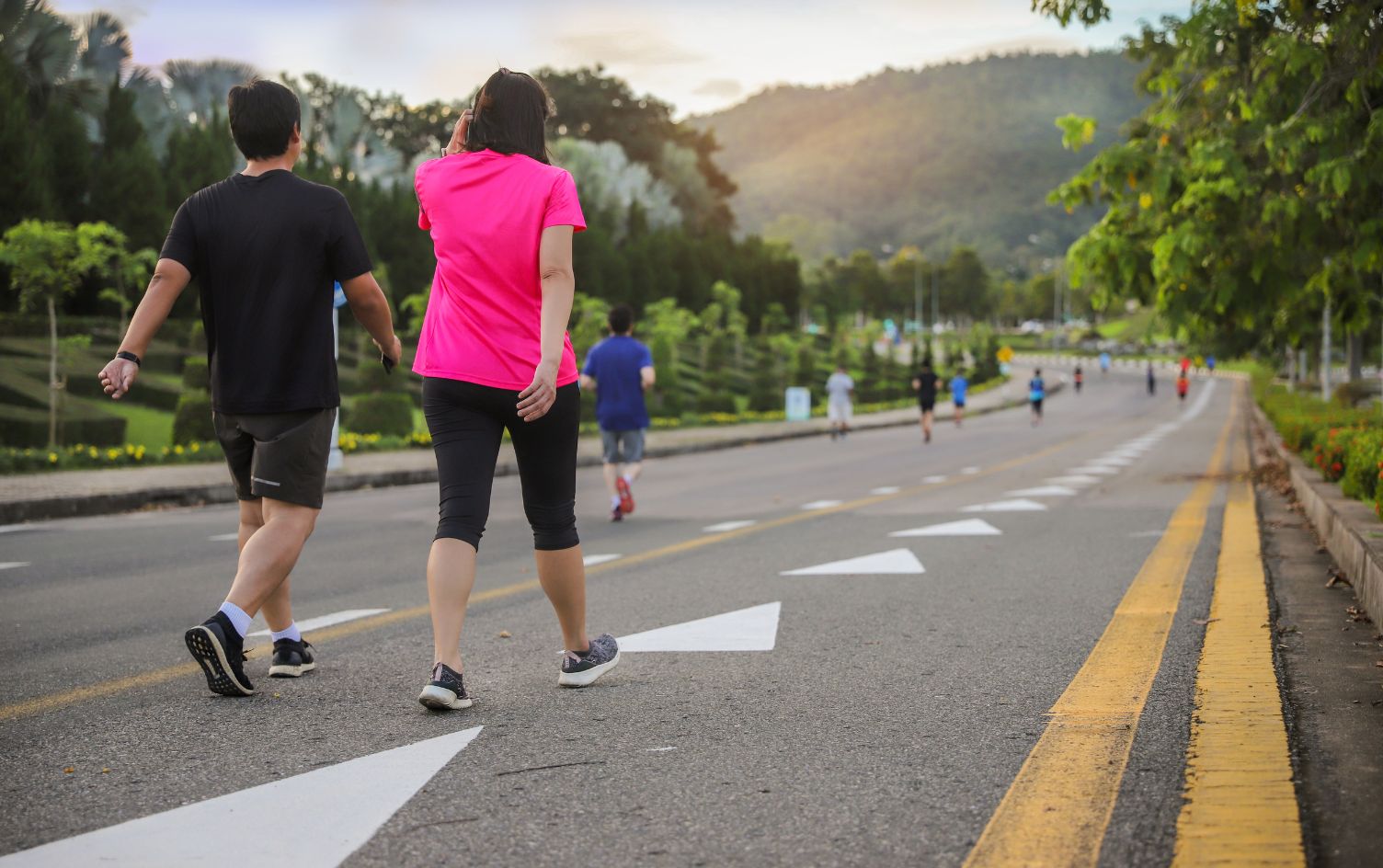You walk the dog, clock 30 minutes on the treadmill or log a few laps around the track — but is the pace brisk enough to have a positive impact on your health? Research published in the British Journal of Sports Medicine defined a brisk walk as 100 steps per minute (about 2.7 miles per hour) and found maintaining that pace was associated with a lowered risk of mortality.
THE RESEARCH
In the study, researchers note that walkers often fail to meet the target of 10,000 steps per day, citing lack of time as the main reason. The researchers concluded, “Given the perceived time barrier cited by those who fail to meet current guidelines, a pace change may be more feasible (for those with adequate physical capacity) than increased volume or duration.”
Researchers reviewed 11 studies published between 1994 and 2008 to examine the associations between slow-, average- and brisk-walking paces and the risk of death. Brisk walkers experienced a 24% risk reduction; walking at an average pace was linked with a 20% risk of death (from all causes) during the research period. The reductions in risk of cardiovascular disease for both brisk and average walkers were similar.
WHAT QUALIFIES AS ‘BRISK’?
Grace Lordan, PhD, associate professor of behavioral science at the London School of Economics, has studied the health benefits of brisk walking and believes “brisk” is an individual measure of effort, explaining, “There is no set speed and each individual should determine their own [definition of brisk] by listening to their bodies. Specifically, a person should be walking at a pace where they can talk but cannot sing.”
WHY INTENSITY LEVEL MATTERS
Intensity is important for all forms of exercise, according to a 2017 study published in the journal Circulation. Women who engaged in moderate-to-vigorous-intensity physical activity such as walking, biking or swimming experienced a 70% reduction in mortality rates compared with more sedentary women. Light-intensity activities like housework and window shopping did not have a positive or negative impact on mortality.
Study co-author Dr. I-Min Lee, ScD, a professor of medicine at Harvard Medical School, notes that physical activity improves cardiovascular fitness, decreases blood pressure, improves lipid profile, increases insulin sensitivity, decreases inflammation and helps maintain body weight — all of which decrease the risk of developing potentially fatal diseases such as heart disease and cancer.
Researchers focused on women with an average age of 72 but Lee believes the results are relevant for men and women of all ages, explaining, “The physiological benefits of physical activity have been shown to occur in diverse populations.”




